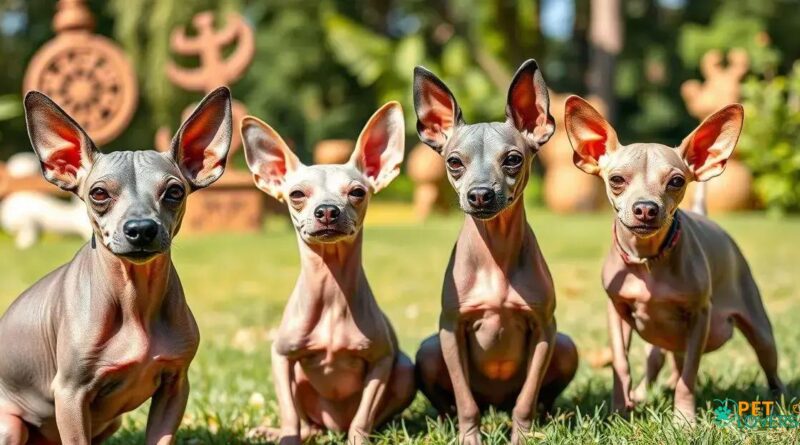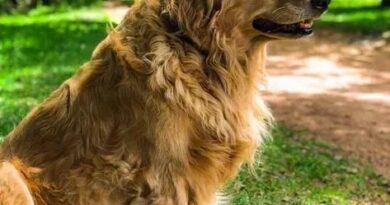Hairless Dog: Uncovering the Truth Behind This Unique Breed
Hairless dogs, known as Xoloitzcuintli or Mexican Hairless Dogs, are a distinctive breed characterized by their lack of hair. Originating from ancient Mexico, they were revered as sacred companions. Today, they are favored for their hypoallergenic qualities, minimal grooming needs, and adaptability to various living environments. With appropriate care, these dogs can lead long, healthy lives and are excellent family pets.
Hairless dogs, also known as Xoloitzcuintli or Mexican Hairless Dogs, have been a topic of fascination for many.
With their unique appearance and intriguing history, it’s no wonder why many dog enthusiasts are curious about these breeds.
In this article, we’ll delve into the world of hairless dogs, exploring their characteristics, history, and health benefits.
Whether you’re a dog lover or simply curious about this unusual breed, you’ll find this information enlightening and entertaining.
What are Hairless Dogs?
Hairless dogs, also known as Xoloitzcuintli or Mexican Hairless Dogs, are a rare breed of dog that is completely or partially lacking in hair. They are an ancient breed with a rich history, dating back to pre-Columbian times in Mexico.
There are three varieties of hairless dogs: the Mexican hairless, the American hairless, and the Chinese Crested, which has a crest of fur on its head. They are all considered to be hypoallergenic breeds, meaning that they do not shed or produce dander, making them a good choice for people with allergies.
The history of hairless dogs dates back thousands of years to ancient Mexico, where they were considered sacred animals and believed to have healing powers.
The Aztecs and Mayans revered these dogs as companions and used them for hunting and guarding. The breed was nearly extinct by the 1960s, but efforts to revive it led to the establishment of a breed club and the development of breed standards.
Hairless dogs come in a variety of sizes, from toy to standard, and have a range of coat types, including smooth, bristled, and crested.
The Mexican hairless breed is the rarest and most endangered, with only a few hundred registered worldwide. The American hairless breed is more common, with a larger population and a wider range of sizes.
Caring for a hairless dog requires special attention to its skin and coat. They need regular bathing and moisturizing to prevent skin conditions and infections.
Hairless dogs also require regular nail trimming, ear cleaning, and dental care to prevent health problems. With proper care, hairless dogs can live long, healthy lives, often up to 15 years or more.
In conclusion, hairless dogs are a unique and fascinating breed that requires special care and attention. With their rich history, diverse coat types, and hypoallergenic qualities, they make a popular choice for many dog enthusiasts.
History and Origins
Hairless dogs, also known as Xoloitzcuintli or Mexican Hairless Dogs, have been a part of human history for thousands of years.
The earliest recorded evidence of hairless dogs dates back to the Mayan civilization in 300 AD, where they were revered as sacred animals and companions to the gods.
The history of hairless dogs is deeply rooted in the ancient cultures of Mexico and Central America.
The breed was highly valued for its unique appearance and its ability to hunt small game, guard, and provide companionship.
There are several key characteristics that define hairless dogs as a breed.
They are known for their unique appearance, with some breeds having a smooth coat and others having a bristled or crested coat.
Hairless dogs require special care and attention to their skin and coat.
They need regular bathing and moisturizing to prevent skin conditions and infections, and regular nail trimming, ear cleaning, and dental care to prevent health problems.
Conclusion
Characteristics and Breeds
Hairless dogs are known for their unique appearance, which sets them apart from other breeds.
There are three main varieties of hairless dogs: the Mexican hairless, the American hairless, and the Chinese Crested, which has a crest of fur on its head.
The Mexican hairless is the rarest and most endangered breed, with only a few hundred registered worldwide.
The history of hairless dogs dates back thousands of years to ancient Mexico, where they were considered sacred animals and believed to have healing powers.
The Aztecs and Mayans revered these dogs as companions and used them for hunting and guarding.
Hairless dogs come in a range of sizes, from toy to standard, and have a variety of coat types, including smooth, bristled, and crested.
Their unique appearance makes them a popular choice for dog owners who want a pet that stands out.
Caring for a hairless dog requires special attention to its skin and coat.
They need regular bathing and moisturizing to prevent skin conditions and infections, and regular nail trimming, ear cleaning, and dental care to prevent health problems.
Conclusion
Health and Grooming
Hairless dogs require special care and attention to their skin and coat due to their unique physiology.
Regular bathing and moisturizing are essential to prevent skin conditions and infections, and regular nail trimming, ear cleaning, and dental care are crucial to prevent health problems.
Additionally, hairless dogs need protection from the sun, wind, and extreme temperatures, which can cause skin irritation and dryness.
Conclusion
As we conclude our exploration of hairless dogs, it’s clear that these unique canines have a special place in the hearts of many dog lovers.
With their rich history, diverse characteristics, and specific needs, hairless dogs offer a fascinating glimpse into the world of dog breeding and ownership.
Whether you’re a seasoned dog owner or just starting your journey, understanding the world of hairless dogs can help you make informed decisions about your next furry companion.
As we conclude our exploration of hairless dogs, it’s clear that these unique canines have a special place in the hearts of many dog lovers.
With their rich history, diverse characteristics, and specific needs, hairless dogs offer a fascinating glimpse into the world of dog breeding and ownership.
Understanding Hairless Dogs
Whether you’re a seasoned dog owner or just starting your journey, understanding the world of hairless dogs can help you make informed decisions about your next furry companion.
Frequently Asked Questions About Hairless Dogs
What are the benefits of owning a hairless dog?
Hairless dogs have several unique benefits, including their hypoallergenic nature, low maintenance coat, and ability to adapt to various living situations.
How do I care for a hairless dog’s skin?
Hairless dogs require regular bathing and moisturizing to prevent skin conditions and infections. They also need protection from the sun, wind, and extreme temperatures.
Are hairless dogs good family pets?
Yes, hairless dogs can make great family pets. They are often gentle, affectionate, and adaptable, making them a great fit for many families.
Can hairless dogs be trained?
Yes, hairless dogs can be trained with positive reinforcement techniques. They are often intelligent and eager to please, making them responsive to training.
Are hairless dogs prone to any health issues?
Like all breeds, hairless dogs can be prone to certain health issues, such as skin conditions and joint problems. Regular veterinary care and a healthy lifestyle can help prevent or manage these issues.
Can I get a hairless dog if I have allergies?
Yes, hairless dogs are a great option for people with allergies. They produce less dander and are hypoallergenic, making them a great choice for those with allergy concerns.





